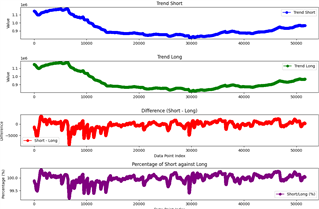Tool/software:
Hello,
I am testing the BQ35100 and verifying tha I can get EOS detection with a Tadiran SL 2780 (programmed with BQ Studio) battery ( 19 mAH , chem id 0x663). Unfortunately what I am noticing in my tests is that I always get an impedance and scaled r value of 0. Nevertheless I get values for Short trend and Long Trend. In addition R Table is updated after the pulse count threshold and R TableScaleUpdateFlag is changed from 0xFF to 0x00. I have not gotten any BAD OCV flag errors.
My current test does 10 seconds measure@100 mA(battery gauge start), 2 seconds Battery R Scale delay, and 15 seconds sleep@40uA (battery gauge stop, GE deactivated).
These are the settings of my BQ35100 (read from my test firmware)
Firmware version: 1
HW version: a800
Chem ID: 663
Design capacity: 19000
Device is in FULL ACCESS mode
Gauge mode: 2
Cell design capacity 19000
Cell design voltage 3700
Cell terminate voltage 2000
Series cell count 1
Max load 50
SOH 100
RA Table:
[0]: 4459
[1]: 4588
[2]: 4487
[3]: 4128
[4]: 3378
[5]: 3465
[6]: 3946
[7]: 4173
[8]: 4249
[9]: 4328
[10]: 4392
[11]: 4574
[12]: 4738
[13]: 4838
[14]: 5089


